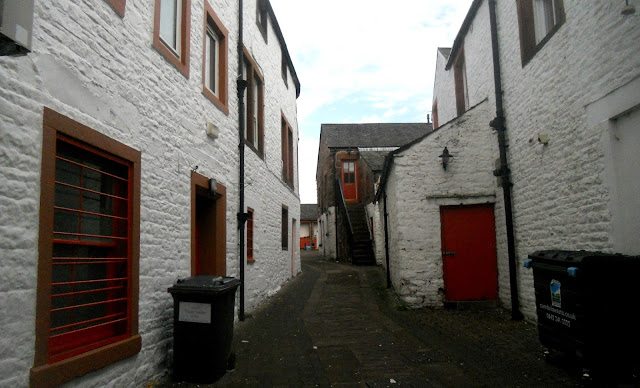I’ve got a little list…I don’t usually post puzzles at this time, but this is not intended to be a serious attempt to bamboozle my readers. Below are eight photos of Penrith landmarks, all of which are identified and described. The order in which they appear is not significant. So what do these landmarks have in common?
WS Gilbert, The Mikado.
The first two photos are of gateposts:
Gateposts: Corney House, Stricklandgate
Gateposts: Mansion House, Friargate
The second pair of gateposts were once topped by carved stone urns, as the following photograph, taken circa 1910, shows. It was originally captioned ‘The doctor’s wife’, implying that there was only one doctor in town at the time. This seems unlikely:
During the Middle Ages, Penrith was, like most small towns, ravaged periodically by bubonic plague. This probably continued into the eighteenth century. Victims were buried in mass graves to the east of town, in areas that were built on in the nineteenth century. When the plague was raging, all financial transactions between townspeople and outsiders required the buyer to place coins into a stone basin filled with vinegar. Given that the transmission vector for bubonic plague is the fleas living on the backs of rats, I doubt the efficacy of such a procedure.
According to Wikipedia, Penrith’s ‘plague stone’ was fashioned in ‘whinstone’. I had always thought it to be sandstone, but on closer examination I found Wikipedia to be correct, which it often isn’t. ‘Whinstone’ is a quarryman’s term for dolerite, a chemical equivalent of basalt that forms shallow intrusions such as the Whin Sill, which underlies the mountain limestone of the North Pennines a dozen miles to the east of Penrith.
Plague stone
The next photo features more gateposts, these ones dating from the eighteenth century:
Gateposts: Dockray Hall, Great Dockray
The next two photos are of landmarks in the graveyard of the local parish church, St Andrew’s:
War memorial
Memorial to the men who built the L&CR
The war memorial, which takes the form of a Celtic cross, was constructed in 1919 to commemorate the Great War. The Lancaster and Carlisle Railway was completed in 1846 and was subsequently taken over by the London and North Western Railway.
There aren’t many of the traditional telephone boxes designed by Giles Gilbert Scott around nowadays, but here is one outside Penrith’s railway station:
K6-type phone box outside Penrith station
The final photo is of another war memorial, this time to remember the Boer War. It is otherwise known as ‘the Black Angel’ and once stood outside the town hall, but it was moved to Castle Park in the 1960s because it was being damaged by traffic fumes.
Black Angel, Castle Park
This list is incomplete.























